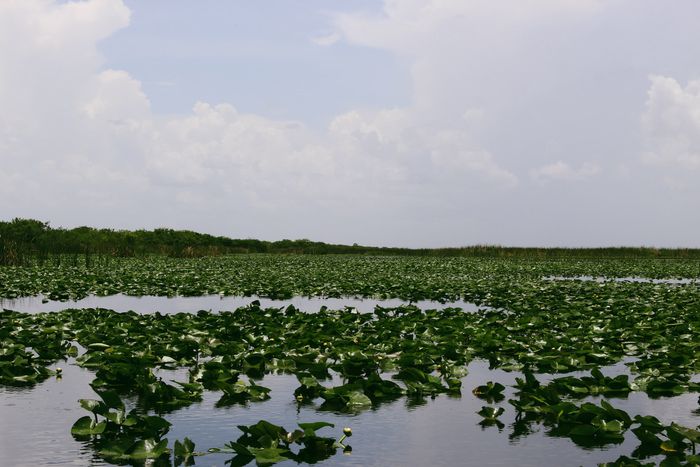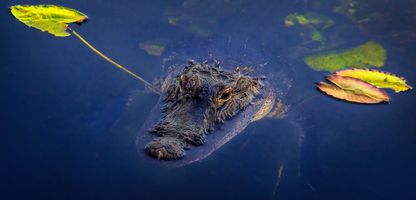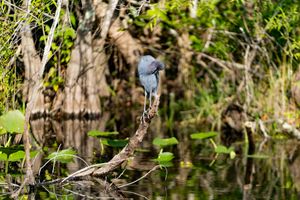Everglades National Park - map, photos and other informations
Table of Contents
Description
Everglades National Park is a national park in the southernmost part of the U.S. state of Florida. The park is located in the Everglades, the sawgrass prairie of the Miami metropolitan area. Everglades is the third-largest national park in the contiguous United States after Yellowstone and Death Valley.
The park protects an unparalleled landscape that provides important habitat for numerous rare and endangered species like the manatee, American crocodile, and the roseate spoonbill. An American National Park that was established in 1934, Everglades is 1.5 million acres (2,350 sq mi, 6,100 km2) in size and is the largest subtropical wilderness in the United States.
The Everglades are a network of wetlands and forests fed by a river flowing south from Lake Okeechobee. The park is the most significant breeding ground for tropical wading birds in North America and contains the largest mangrove ecosystem in the western hemisphere.
One third of the park has been set aside as a protected area, the Everglades National Park. The park is home to 36 protected species, including the Florida panther, the American alligator, and the Atlantic coastal shellfish.
The Everglades were once a vast wetland of sawgrass prairies, mangrove wetlands, and cypress swamps that stretched from central Florida to the Florida Keys. The ecosystem of the Everglades has been drastically altered by human settlement and development over the past century.
The Everglades are currently the subject of an aggressive restoration effort to return the ecosystem to its original state. The park is also a popular tourist destination, with over one million visitors each year.
The park is divided into two major regions: the northern Everglades and the southern Everglades. The northern Everglades is a vast wetland of sawgrass prairies, mangrove wetlands, and cypress swamps that stretches from central Florida to the Florida Keys. The southern Everglades is a smaller region of mangrove wetlands and cypress swamps that extends from the southern end of the Florida peninsula to the northern shores of the Florida Bay.
The park is bisected by the Tamiami Trail, a road that runs east-west across the southern part of the Florida peninsula. The northern part of the park can be accessed from the Tamiami Trail by taking the Everglades Parkway (State Road 836) east from Miami. The southern part of the park can be accessed from the Tamiami Trail by taking US-41 (the Tamiami Trail) west from Miami.
Photos of Everglades National Park
Frequently Asked Questions (FAQ) about Everglades National Park
What to do in Everglades?
The Everglades National Park is a popular tourist destination, with over one million visitors each year. The park offers a variety of activities for visitors, including hiking, biking, canoeing, kayaking, fishing, and birdwatching.
What animals live in the Everglades National Park?
The Everglades National Park is home to a diverse array of plants and animals. The park is home to 36 protected species, including the Florida panther, the American alligator, the Atlantic coastal shellfish, and the manatee. The park is also home to a variety of birds, reptiles, fish, and mammals.
Average weather in Everglades National Park
|
|
|
|
|
|
|---|---|---|---|---|
| Jan | 24 °C 75 °F | 17 °C 63 °F | 39 mm 1.5 in | 0 mm 0.0 in |
| Feb | 25 °C 77 °F | 19 °C 66 °F | 27 mm 1.1 in | 0 mm 0.0 in |
| Mar | 26 °C 79 °F | 20 °C 68 °F | 18 mm 0.7 in | 0 mm 0.0 in |
| Apr | 28 °C 82 °F | 22 °C 72 °F | 48 mm 1.9 in | 0 mm 0.0 in |
| May | 29 °C 84 °F | 23 °C 73 °F | 103 mm 4.1 in | 0 mm 0.0 in |
| Jun | 30 °C 86 °F | 25 °C 77 °F | 145 mm 5.7 in | 0 mm 0.0 in |
| Jul | 31 °C 88 °F | 26 °C 79 °F | 101 mm 4.0 in | 0 mm 0.0 in |
| Aug | 31 °C 88 °F | 26 °C 79 °F | 118 mm 4.6 in | 0 mm 0.0 in |
| Sep | 30 °C 86 °F | 25 °C 77 °F | 164 mm 6.5 in | 0 mm 0.0 in |
| Oct | 29 °C 84 °F | 24 °C 75 °F | 84 mm 3.3 in | 0 mm 0.0 in |
| Nov | 27 °C 81 °F | 21 °C 70 °F | 36 mm 1.4 in | 0 mm 0.0 in |
| Dec | 25 °C 77 °F | 20 °C 68 °F | 34 mm 1.3 in | 0 mm 0.0 in |
Other parks nearby
-
Lignumvitae Key Botanical State Park32.3 mi (52.0 km)|state park
-
Windley Key Fossil Reef Geological State Park33.1 mi (53.2 km)|state park
-
Indian Key Historic State Park33.3 mi (53.6 km)|state park
-
San Pedro Underwater Archaeological Preserve State Park35.2 mi (56.7 km)|state park
-
Long Key State Park35.6 mi (57.2 km)|state park
User Reviews
Share your experience! Your honest feedback helps others make informed decisions.
Login to add new review




